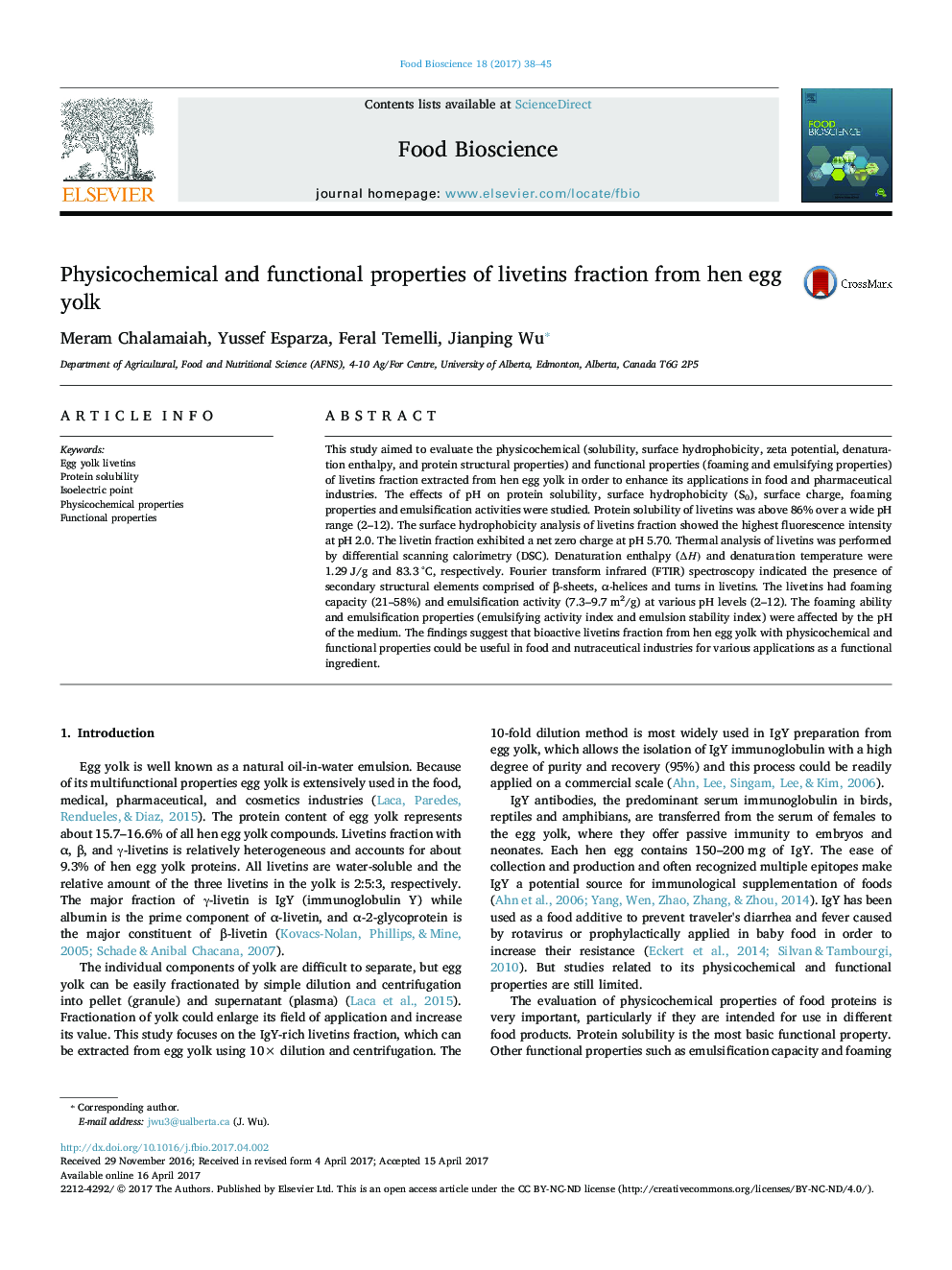| کد مقاله | کد نشریه | سال انتشار | مقاله انگلیسی | نسخه تمام متن |
|---|---|---|---|---|
| 6451792 | 1416487 | 2017 | 8 صفحه PDF | دانلود رایگان |
- Physicochemical and functional properties of egg yolk livetins (IgY) fraction were determined.
- Solubility of livetins was above 86% over a wide pH range (2-12).
- The isoelectric point (pI) of livetins is pH 5.7.
- Egg yolk livetins exhibited good functional properties.
- Livetins could be useful in food/ nutraceutical/ pharmaceutical industry.
This study aimed to evaluate the physicochemical (solubility, surface hydrophobicity, zeta potential, denaturation enthalpy, and protein structural properties) and functional properties (foaming and emulsifying properties) of livetins fraction extracted from hen egg yolk in order to enhance its applications in food and pharmaceutical industries. The effects of pH on protein solubility, surface hydrophobicity (S0), surface charge, foaming properties and emulsification activities were studied. Protein solubility of livetins was above 86% over a wide pH range (2-12). The surface hydrophobicity analysis of livetins fraction showed the highest fluorescence intensity at pH 2.0. The livetin fraction exhibited a net zero charge at pH 5.70. Thermal analysis of livetins was performed by differential scanning calorimetry (DSC). Denaturation enthalpy (âH) and denaturation temperature were 1.29 J/g and 83.3 °C, respectively. Fourier transform infrared (FTIR) spectroscopy indicated the presence of secondary structural elements comprised of β-sheets, α-helices and turns in livetins. The livetins had foaming capacity (21-58%) and emulsification activity (7.3-9.7 m2/g) at various pH levels (2-12). The foaming ability and emulsification properties (emulsifying activity index and emulsion stability index) were affected by the pH of the medium. The findings suggest that bioactive livetins fraction from hen egg yolk with physicochemical and functional properties could be useful in food and nutraceutical industries for various applications as a functional ingredient.
239
Journal: Food Bioscience - Volume 18, June 2017, Pages 38-45
